NIGHT IN THE WOODS Review
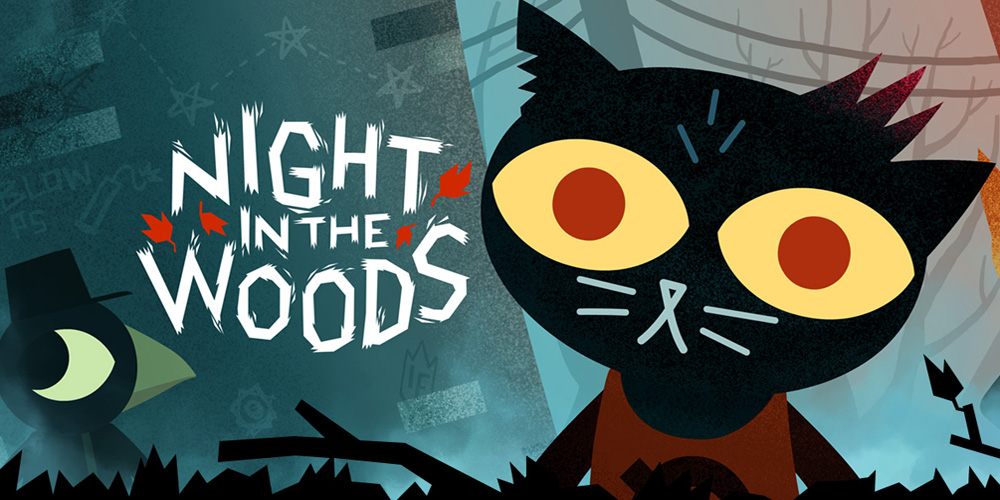
They say that art imitates life, and that the opposite is true as well. Much like the delinquent protagonist of Infinite Fall’s NIGHT IN THE WOODS, I find myself being drawn back to the dead Midwest mining town of Possum Springs, either unable or unwilling to ignore its call. It’s not an attraction rooted in logic; both of us are well aware that there is nothing new waiting for us at the end of those three familiar blocks, just an endless void where the artifice simply ceases to exist and the uncomfortable disconnect from reality sets in. I’m writing this review in the middle of my second playthrough of the game, which I readily embarked upon despite my knowledge of the impending disappointments awaiting me. NIGHT IN THE WOODS is flawed in many ways, but despite this, it is easily one of the most identifiable games that I have ever played.
Though NIGHT IN THE WOODS has been in development for over three years, it wasn’t until just a few months ago at IndieCade 2016 that I got introduced to the long-awaited indie darling with a hands-on demo. The playable segment had an innate magnetism, thanks largely to clever writing and an absorbing atmosphere, that secured it as our favorite game of the show. After numerous delays, the full release is finally here, but what no carefully-arranged convention floor demo or flashy teaser trailer could capture is the crushing sense of existential dread lying within NIGHT IN THE WOODS. More on that in a bit.
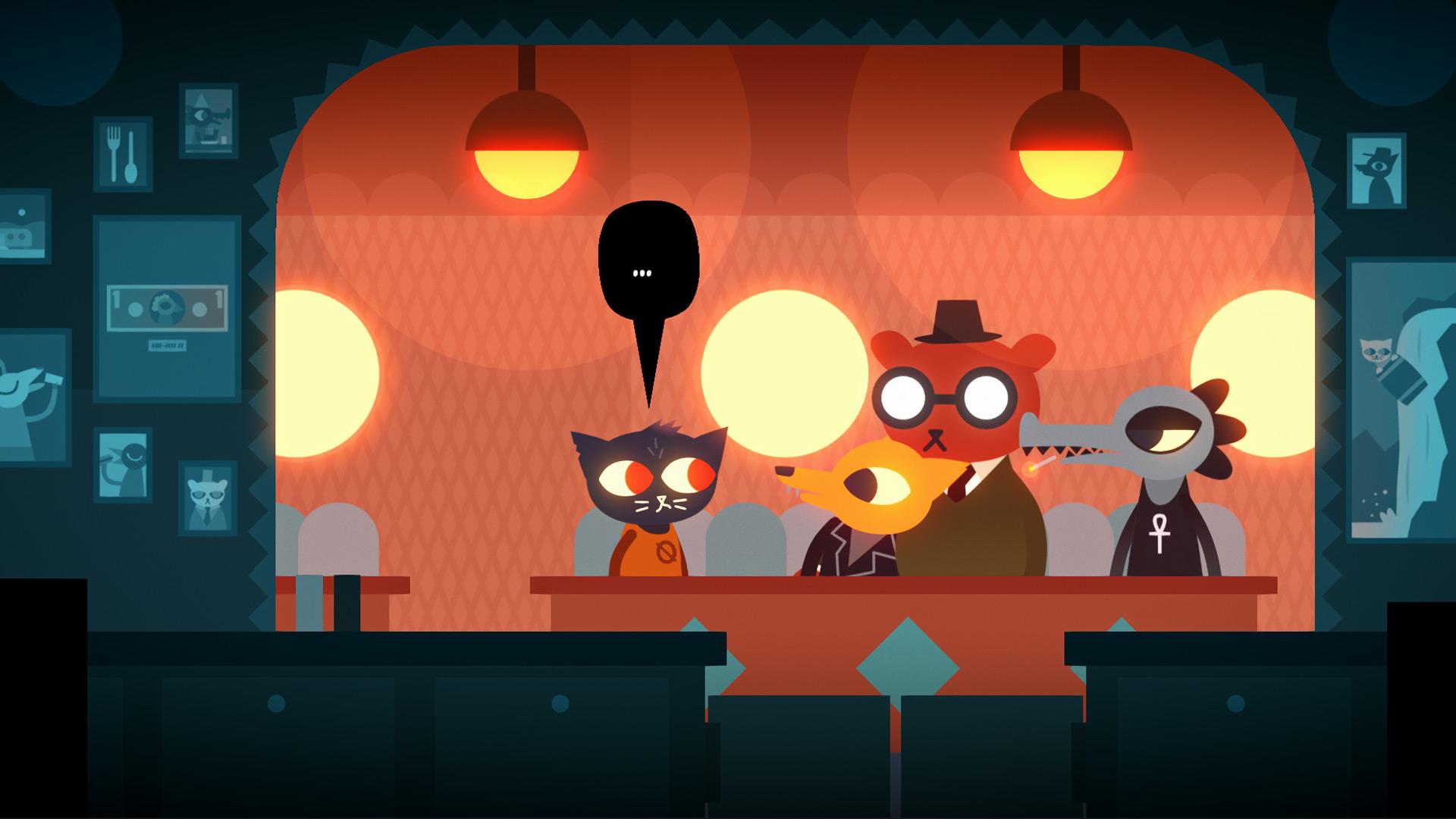
Pauses are essentially what captions are for anyway
You play as Mae, a deadbeat college dropout who has returned to her rural childhood home while she tries to figure out what the hell she’s going to do with her life. In the meantime, you spend each day traversing Possum Springs and conversing with the many denizens. Not unlike the Persona series, your day is limited in the number of activities you can carry out, after which you must go to bed. Weeks pass, seasons change, and the relationships that develop with the people you choose to interact with will affect the course of the narrative.
What initially drew me in, and what ultimately dampened the overall experience, is the pacing of the game’s plot. For the longest time, NITW is about nothing. You aimlessly drift about town, chatting up friends and neighbors, and you hit the sack just as chronically unemployed and unmotivated as you were when you woke up. Seemingly important plot devices are introduced, but are promptly forgotten about. Gaming language is also used to supplement the themes of stagnation; it’s no mistake that in this regressive journey, you progress from right to left, flying in the face of common 2D game design. In the objective-driven world of video gaming, this prioritization of character over story in a “narrative” game is a breath of fresh air. At least, it seemed to be.
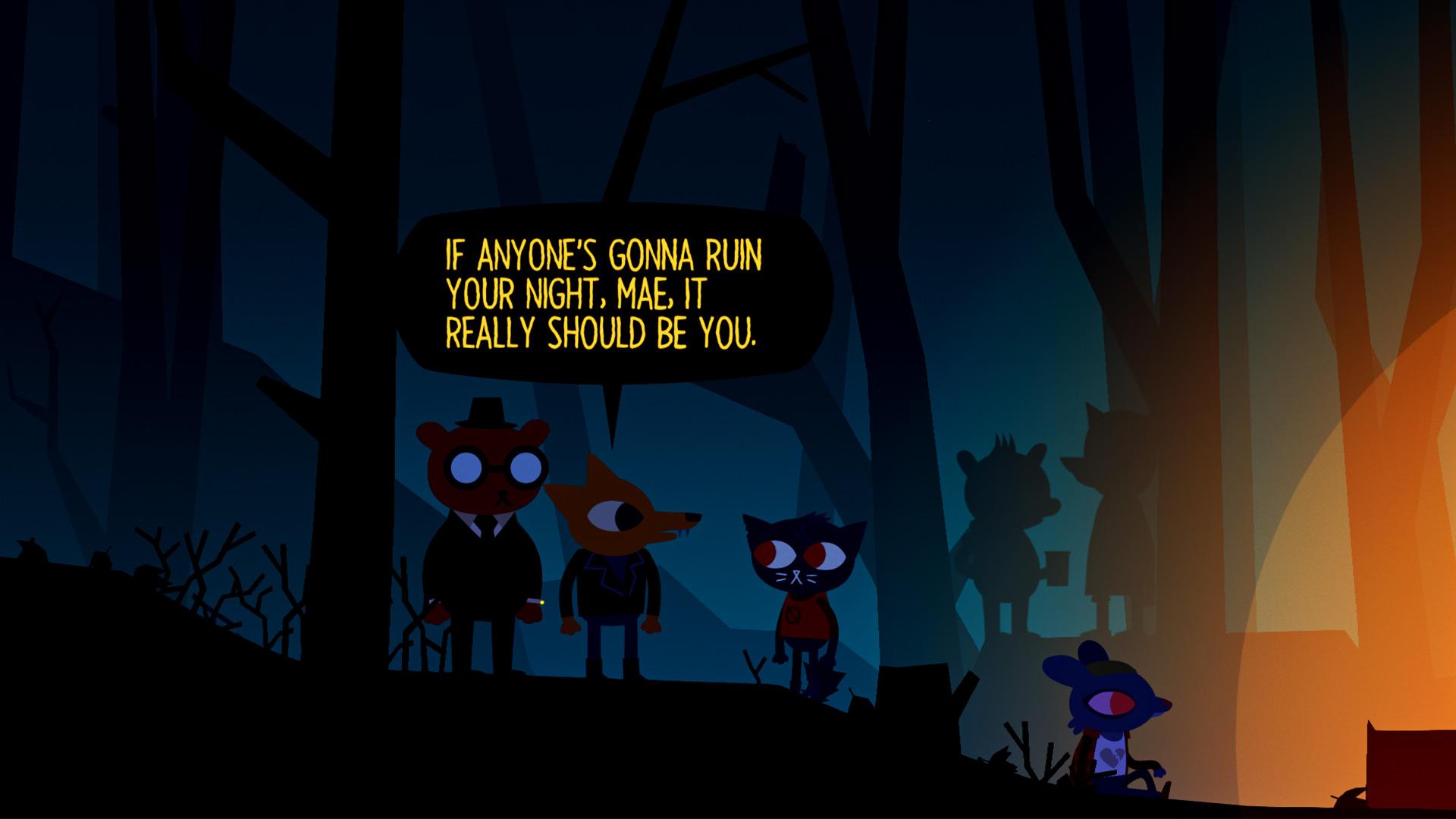
Plot, night, it’s all the same
Out of some sense of obligation to be what a video game is traditionally perceived to be, NITW eventually foists a maybe/maybe not supernatural mystery upon the player, turning something that was closer to GHOST WORLD into Vaguely Reminiscent Of TWIN PEAKS Volume 14. I’m all for a bit of coming-of-age mixed with fantastical elements, but NITW’s sudden heel turn is wholly ineffective. Incorporated about halfway through the roughly 10 hour adventure, the mystery begins far too late to be considered good pacing. The decision to insert goals and structure also undermines the malaise that the game fosters within the player. The plot later tries to return to the subversive nature we saw in the first half, but does this before resolving the story it began, making the whole conclusion feel like a jumbled mess of conflicting tones and themes.
Additionally, while NITW does feature a bevy of mini games, ranging from rhythm-based band practices, target shooting, and a fully realized HYPER LIGHT DRIFTER clone on Mae’s laptop that is way more fun than it has any right to be, the overwhelming majority of the action gameplay is comprised of clunky platforming segments. It’s not that the handling is awkward, the truth is the complete opposite; Mae is a joy to control, her triple jump proving a unique, but reliable, method of navigating the environment. Said environment, however, often proves to be needlessly frustrating. NITW’s simple 2D art style is good for many things, but it lacks the definition needed to illustrate what elements of the world can be interacted with. The main “challenge” of these platforming segments is a trial-and-error process of figuring out which ledges Mae will land on and which she will fall right through. It would be easy to ignore the wonkiness of the design if exploration was limited to Possum Springs, but instead we have to deal with a slew of unnecessary dream sequence punctuation most days that exclusively revolve around jumping on things. Devoid of narrative importance or any engaging mechanics, these dream levels provide the worst kind of padding possible, killing flow and driving the player to put down the controller.
Fortunately, the cliched investigation plot line and the out-of-place acrobatics are relatively benign in that they do not detract from NITW’s core strengths. Dialogue is incredible, achieving in earnestness what JUNO did in parody, all while maintaining the same level of quirkiness and wit that film had. But despite the cute animal characters and charming presentation, NITW is anything but a cheerful game. Possum Springs is quintessential Rust Belt, the looming specter of foreclosures and failed businesses far scarier than any ghost that is conjured forth. The tragedy of the recession, along with Mae’s struggle with her faith, are used to explore the overwhelming sense of loneliness and loss of purpose that each of NITW’s characters feel.
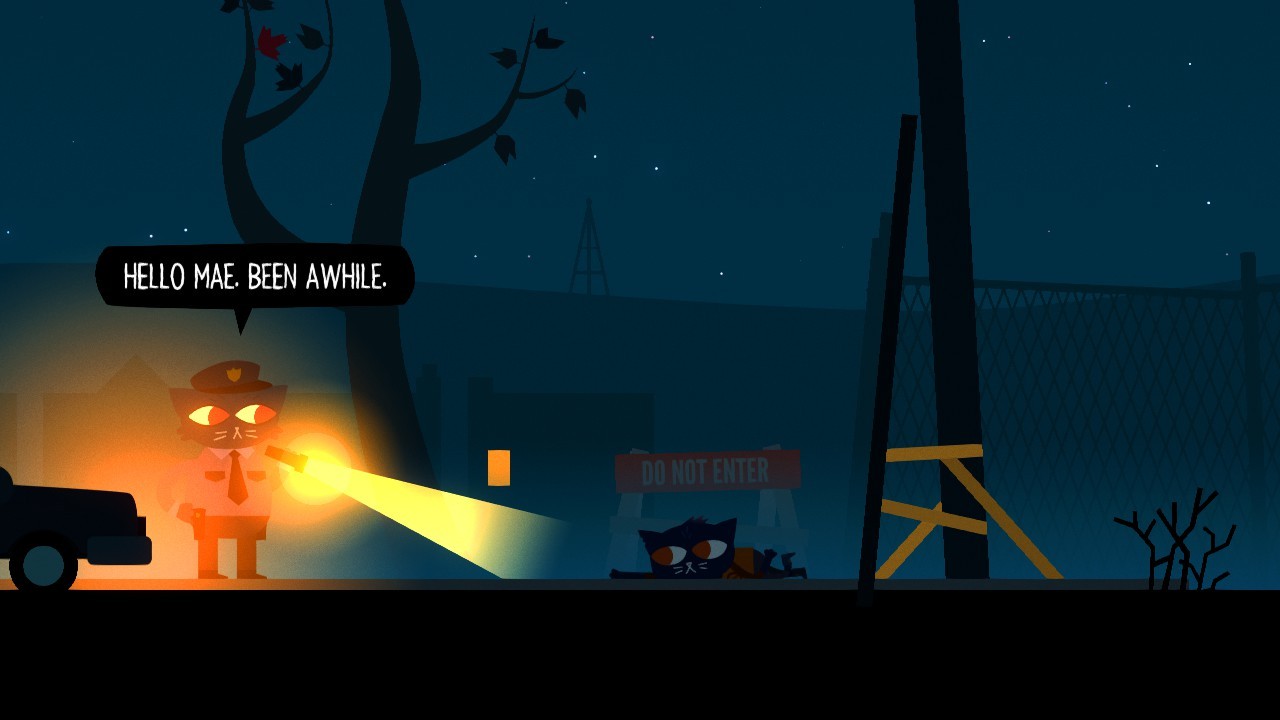
And loss of contacts for some
And speaking of the cast, NITW features some of the best character writing ever seen in gaming. Going off the game’s themes of depression (in all its forms), everyone in Possum Springs has their own damage, whether it be abuse, neglect, debt, mental illness, or any other emotional, physical, or financial burden that comes with living in a dot on the map that the rest of the country has forgotten about. As previously mentioned, NITW is bleak, but it’s also not without hope. Whether they have any agency in their situation or not (NITW would argue that nobody really does), the people trapped in Possum Springs make the best they can out of their existence. Whether that’s religion, love, or family, Mae and friends find reasons to keep on going. It’s the same sentiment shared by ARRIVAL, an appeal to live life to the fullest that you possibly can, and I think that that kind of message is something that anyone could use every now and again.
NIGHT IN THE WOODS hits way, way closer to home than I expected it to, but I’m glad that it did. The story completely veers off into bizarro land in the second half, and there are far too many wonky action interludes for an emotional drama about the recession, but to become fixated on those aspects would be to ignore NIGHT IN THE WOODS’s most important message. Not everything in life is perfect, and there will be times where you’ll hit some pits that you might not have the will to climb out of. NIGHT IN THE WOODS certainly has these moments, and it’s in this vein that it imitates life to a degree that no “immersive sandbox” has ever come close to. But surrender is not true survival, and happiness can only be attained when you decide to press on. There’s beauty to be found in life if you work for it, just as there is in this game. Whether intentionally or not, NIGHT IN THE WOODS captures what it means to be human in ways unrivaled within the medium, and is therefore absolutely essential to experience.
Verdict: Recommend
Reviewed on PlayStation 4, also available on PC.

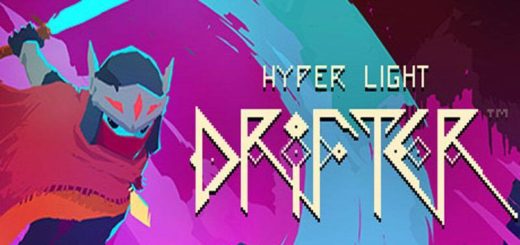
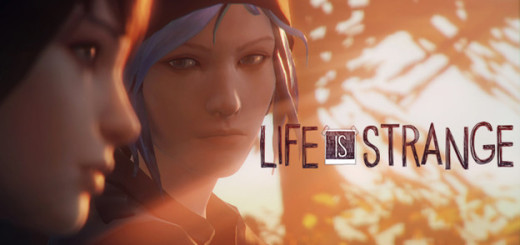
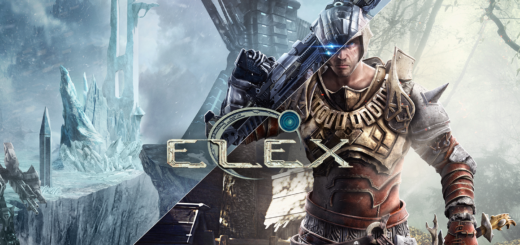
1 Response
[…] see BEFORE THE STORM feature a plot that is (mostly) devoid of the fantastic. My main criticism of NIGHT IN THE WOODS was the superfluous murder mystery that cropped up halfway through the game. It was contrived, said […]